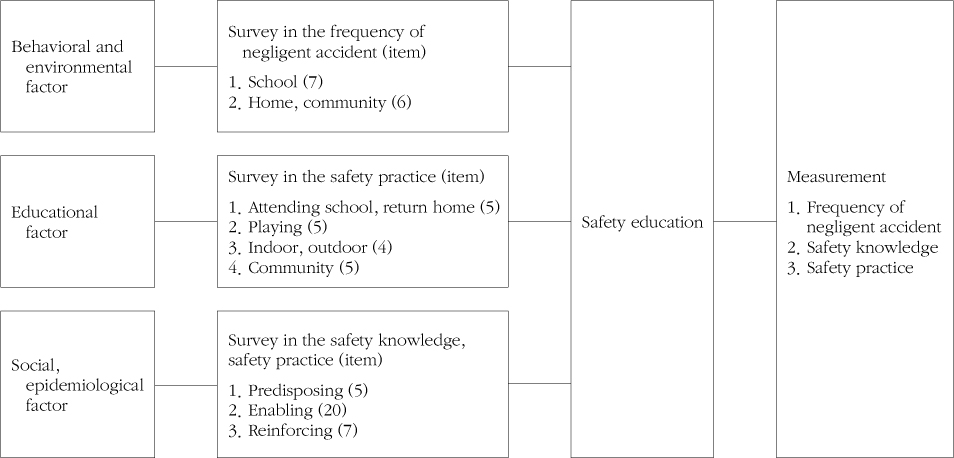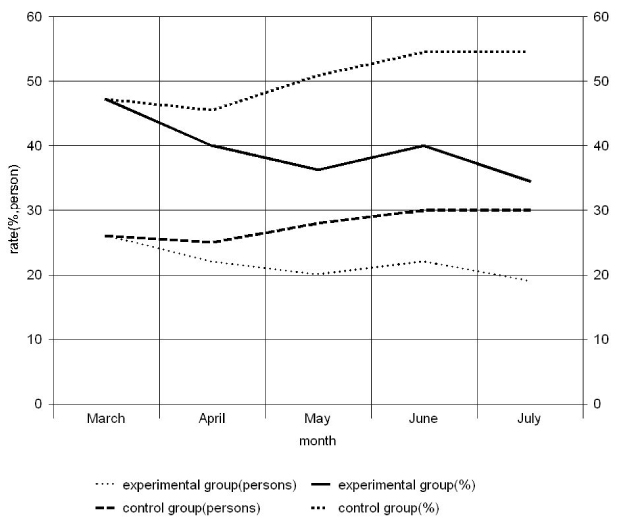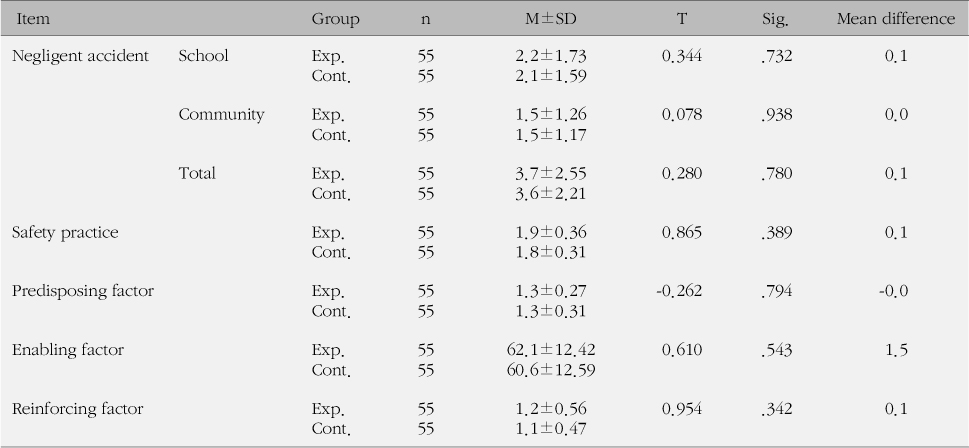References
1. Back KW, Lee MS. A diagnostic study of safety education in elementary schools based on PRECEDE model. Health Educ Promot 2001;18(1):35–47.
2. Choi JH. The survey of child accident Seoul: Korean Consumer Agency; 2009.
3. Chun CO. The study of school negliance in elimentary school Chungwon: Korea National University of Education; 1997. Unpublished master's thesis.
4. Green LW, Kreuter MW, Deeds SG, Patridge KB. Health education planning: A diagnostic approach California: Mountain View; 1980.
5. Guyer B, Gallagher SS, Chang BH, Azzara CV, Cupple LA, Colton T. Prevention of child injuries: Evaluation of the statewide childhood injury prevention program (SCIPP). Am J Public Health 1989;79(11):1521–1527.
6. Hayes DM, Fors SW. Self-esteem and health instruction: Challenge for curriculumn development. J Sch Health 1990;60(5):208–211.
7. Huh SK, Jang SK, Noh BS. The practice of industrial safety Seoul: Hakmoon Company; 2002.
8. Jun ST. A study on the safety education of elementary school Kyungnam: Kyungnam University; 1998. Unpublished master's thesis.
9. Jung MA. The effect of safety education on safety knowledge and behavior among elementary school student Taegu: Kyungpook National University; 2004. Unpublished doctoral dissertation.
10. Kim JU, Park BS, Kim KC, Suh JY, Yi SH, Park CW, et al. Physical education Seoul: Kyohak Publishing; 2010.
11. Kim SH. A prediction model of health promotion behavior for school children Seoul: Ewha Womans University; 2007. Unpublished doctorial dissertation.
12. Korea Consumer Agency. The survey of safety negligent to educational institution 2009. Retrieved May 8, 2009. from
http://www.kca.go.kr.
13. Kwang HS. A study on the pedestrian safety education for elementary school children. J Korean Soc Health Educ 1993;10(1):61–71.
14. Kwon SH. Development and effect of safety education program for higher grade students of elementary school Seoul: Yonsei University; 2005. Unpublished master's thesis.
15. Lee EY. The effect of safety education on safety knowledge and behavior among elementary school student Daegu: Kyungpook National University; 2001. Unpublished master's thesis.
16. Lee KY. The effect of theoretical and practical reinforced instruction of traffic safety on elementary student's traffic safety rule behavior Jeonju: Chonbuk National University; 2005. Unpublished master's thesis.
17. Loescher LJ, Taylor A, Christensen DH, Mckinney M. Educating preschoolers about sun safety. Am J Public Health 1995;85(7):939–943.
18. Ministry of Education, Science, Technology Official Announcement. Repaired curriculum in the health education 2008. 09. 12. Retrieved September 12, 2008. from
http://www.mest.go.kr.
20. Renaud L, Suissa S. Evaluation of the efficacy of simulation games in traffic safety education of kindergarten children. Am J Public Health 1989;79(3):307–309.
21. Sim MY, No HY, Cho SS, Cho YJ, Choi MS, Shin HJ, et al. Health Daegu: Sukyung Publishing; 2009.
22. Son JH. The study on the effectiveness of participatory road traffic safety education for the elementary school student in Korea Seoul: Ewha Womans University; 2006. Unpublished master's thesis.
24. Yoon SY, Lee KS, Lee HJ, Shin YM, Kim CM, Choi JM. Health promotion Seoul: Soomoon Publishing; 2000.







